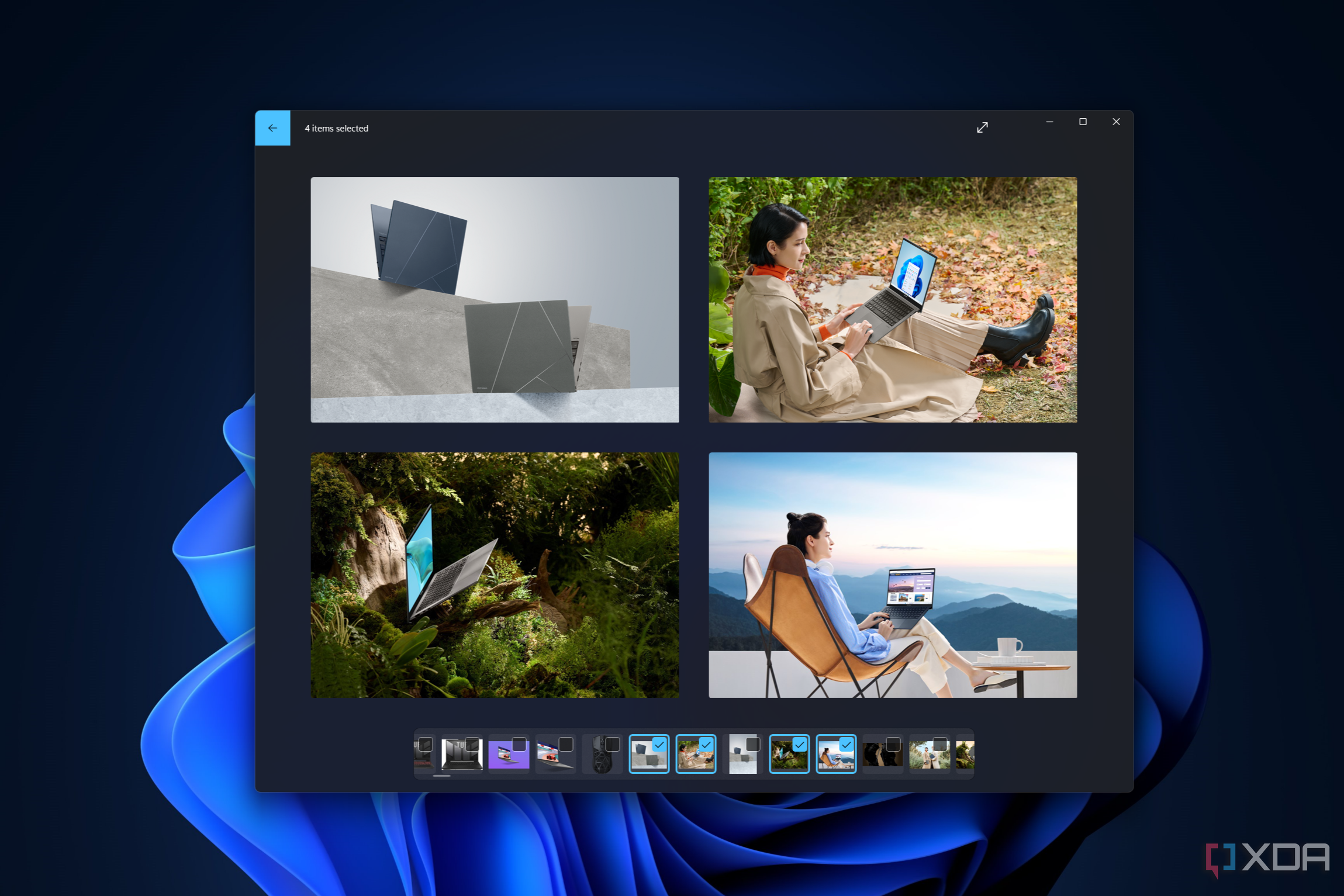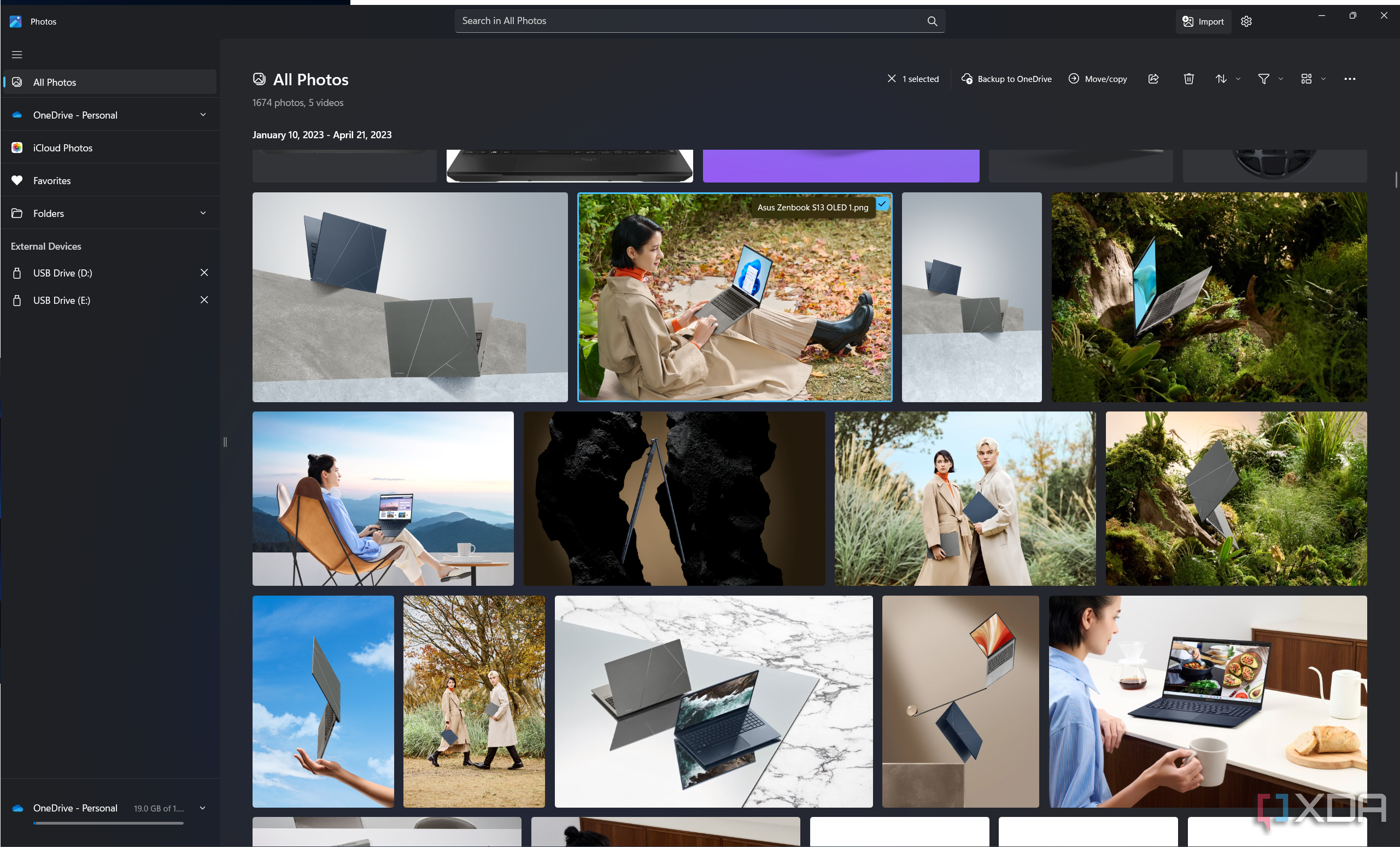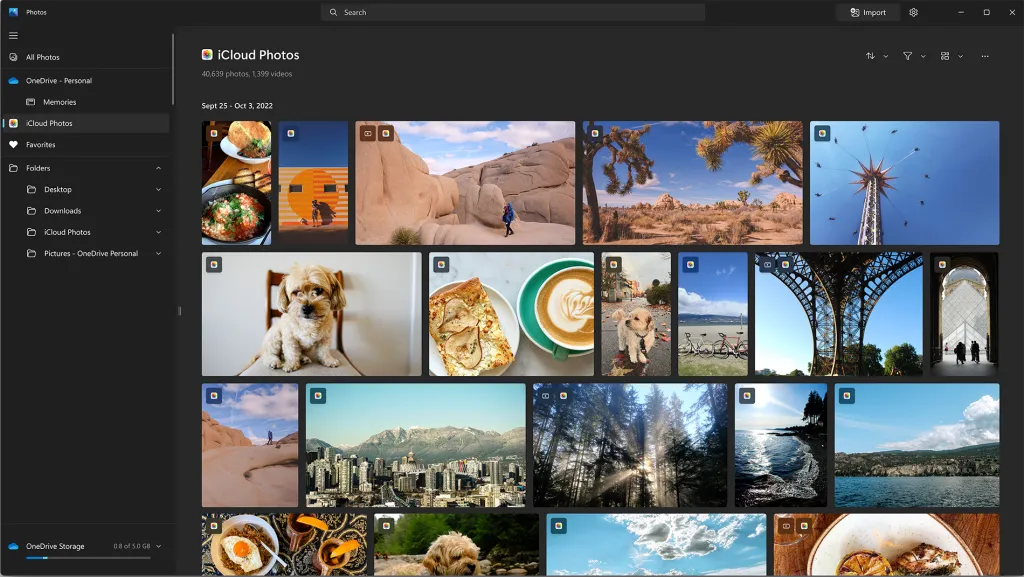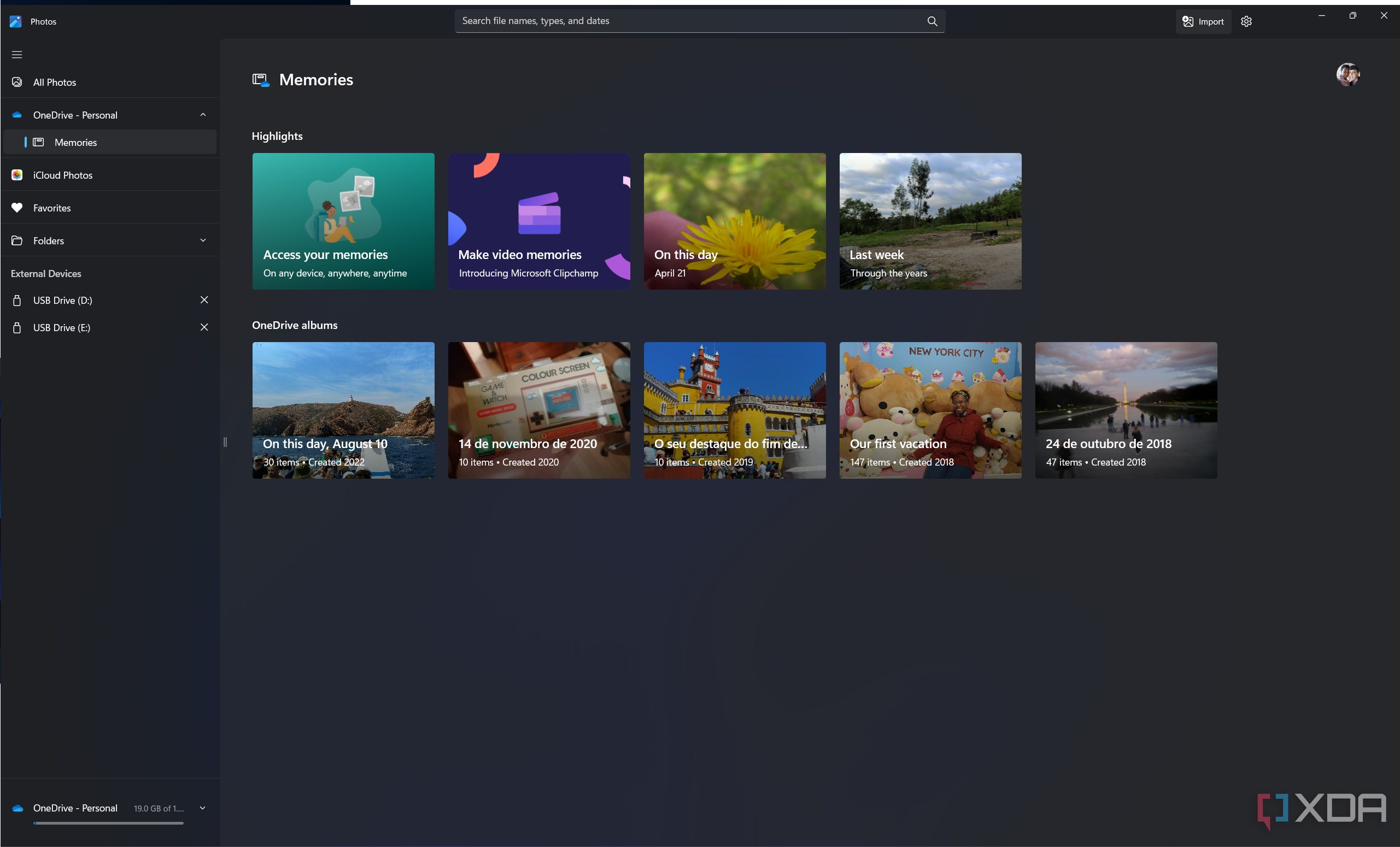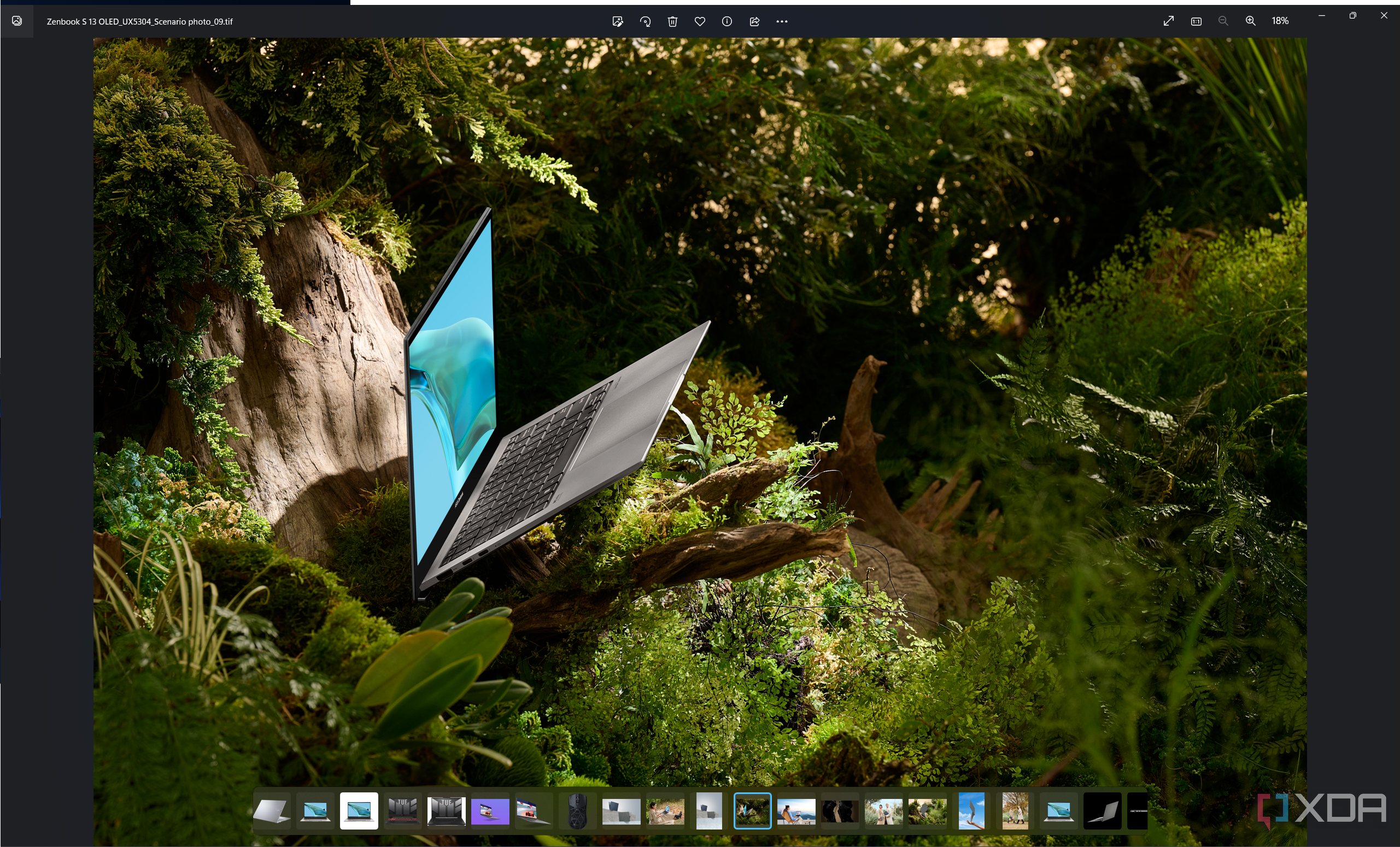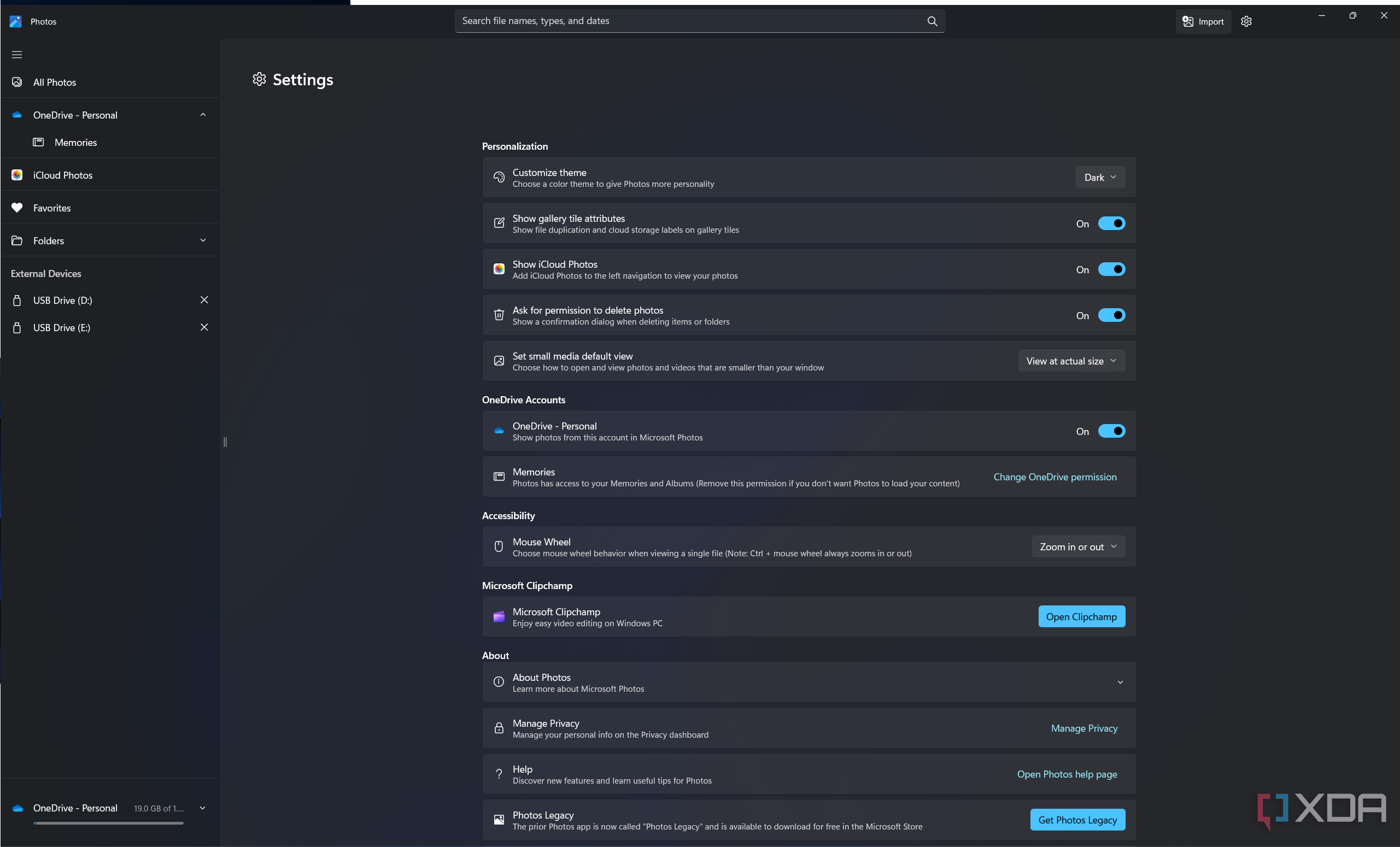Quick Links
Windows 11 has been available for over a year now, and it recently received its first major update with the Windows 11 2022 Update, or version 22H2. Both bring major changes to the table, and many of the included apps have also been redesigned, some more than others. That includes the Photos app, which had seen some design changes already in the initial Windows 11 release, but got even bigger changes with Windows 11 version 22H2.
Starting in November 2022, Microsoft rolled out a major update for the Photos app, which completely redesigns the gallery view, adds some new features, and gets rid of some old ones. Let's take a closer look at the latest version of the Photos app on Windows 11 and see what it has to offer.
The new gallery view
The new Photos app comes with a completely revamped gallery view and improved navigation. The main stage of the app still shows you your recent pictures, but you'll see a navigation pane on the left side of the screen with the folders on your PC and OneDrive, so you can more easily find the media you're looking for. You also have a section for your favorites, as well as a couple of other sections for OneDrive and iCloud. At the bottom of the pane, there's also information about how much storage you have left on your OneDrive.
Microsoft also removed the carousel at the top of the app containing suggested content, so the focus is on your files alone. The tabbed navigation at the top is also gone, and the title bar is mostly used to house a search bar along with buttons to import photos from connected devices and access the app's settings.
The gallery view itself is pretty different now. Photos are no longer separated by date, but there's a line above the main view that tells you the date range of the images that are currently visible. All the photos are now displayed together without any visual interruptions, and there are new viewing modes, too. The new River mode lets pictures show up closer to their original aspect ratio, but you can switch to a Square mode if you want something that looks more standardized and clean. Additionally, you can now filter to see only photos or videos.
There are also some changes to how interacting with the app works. Now, when you click an image, you select it, and you have to click twice to open it. Selecting a photo gives you access to new options, like moving it to a different folder or, for locally-stored files, the ability to back it up to OneDrive. When you open a picture, it now opens in a separate window, instead of taking over the gallery view.
OneDrive and iCloud integration
As we mentioned above, there are a couple of extra sections on the navigation pane on the side, but they're pretty big additions. The first is integration with iCloud Photos, which means you can see all your photos stored in iCloud using the Photos app on Windows 11. You'll still need to install the iCloud app from the Microsoft Store, but once you do, you'll be able to see your pictures here, bringing photos from your devices together more easily,
Additionally, there's OneDrive integration, which lets you see your OneDrive memories. These are automatically-generated albums on OneDrive that are based on a specific date or location, so you can revisit important moments in your life.
Unfortunately, clicking a OneDrive memory takes you to your browser to see the photos, so the integration here is somewhat lackluster.
Viewing photos
The photo viewing experience with the new Photos app is mostly unchanged from the previous version of Windows 11's initial release. The photo you're looking at naturally takes up the most space, and above it, you see controls that let you edit or delete a photo, add it to your favorites, share it, and so on. The ellipsis menu contains some additional options like printing the photo.
However, there are some visual changes here. The photo viewing window now uses the Mica material, so you can see the colors of your desktop background shine through the empty areas of the window. The carousel at the bottom also uses a transparency effect instead of being fully opaque. And since the photo viewer now opens in a separate window, the button in the top left corner isn't an arrow; it's just a button that switches you back to the gallery view without closing the photo viewer.
Editing photos
If you want to make edits to your photos, there are some changes here as well. All the editing options are available using the Edit button in the toolbar at the top, and they're split into four categories: Crop, Adjustment, Filter, and Markup. All of this is the same as with the previous version of the app, so you can crop, rotate, adjust the angle of a photo, apply filters, and draw on a picture.
However, some more advanced features have been removed, like the ability to add animations and 3D effects. These features relied on the video editor in the Photos app, which is no longer available. Speaking of which...
No more video editor
A big change to this version is that it no longer contains a video editor, and that's because Microsoft now ships Clipchamp with Windows 11. Clipchamp is a much more advanced program with multi-track editing and more intricate features compared to what the Photos app used to offer. It even includes some themes and stock assets for you to use in your videos. We have a guide on how to use Clipchamp if you'd like to learn more about that.
Settings
The settings page in the new Photos app has also been significantly revamped and simplified. You can change a lot of options, including the app's theme (if you want it to be different from your system setting), whether the app should ask for permission before deleting a file, and more. You can disable access to your OneDrive or iCloud if you change your mind about using those features, too, or choose whether those options should be visible on the sidebar.
You can also customize the mouse behavior while viewing a picture, so the mouse wheel either controls zoom or shifts between pictures. There's also a link to download the Photos Legacy app, which is how you can use the old version of the Photos app if you prefer it.
That's about all you need to know about the Photos app in Windows 11. With the latest update, the app is even more beautiful than before, it's more neatly organized, and it even has integration with iCloud, which is really nice to see. If you still have the original version, it will look quite a bit different, but you can simply check for updates in the Microsoft Store to get it.
This redesigned Photos app was launched alongside an update for Windows 11 version 22H2, so if you aren't getting it on your PC, it may be because you have the original Windows 11 release. You can check out our guide on how to upgrade to Windows 11 version 22H2 if you're not sure how to do that.

